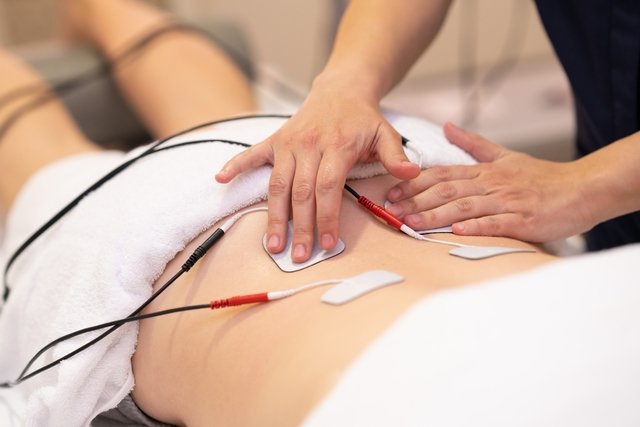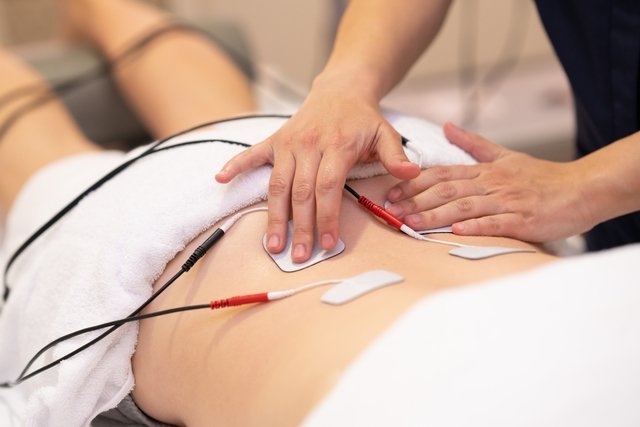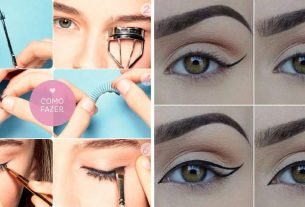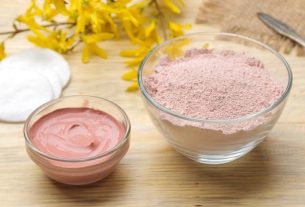Russian current is a device that uses electrical current to stimulate muscle contraction, promoting increased strength and muscle volume.
This technique is widely used in physiotherapy to treat people who cannot contract a muscle effectively, as in the case of people who have had a stroke or who are paraplegic, for example.
As this device promotes increased muscle strength, the Russian current has also been used by athletes to improve performance and for aesthetic purposes with the aim of strengthening the abdominal muscles, for example. However, this use is still debated and the effects achieved only by the Russian current are considered inferior to those achieved through physical activity.

What is Russian chain for?
Russian current is mainly used in physiotherapy in the rehabilitation process of people who cannot contract their muscles correctly, but it can also be indicated for aesthetic purposes.
The main indications of the Russian current are:
- Post-stroke rehabilitation;
- Prevention of muscle atrophy;
- Treatment of paraplegia;
- Strengthening the abdominal muscles, glutes and legs;
- Combating abdominal sagging;
- Improves performance, strength and muscular endurance in athletes.
The number of Russian current sessions depends on each person’s muscular situation, and daily sessions lasting 10 to 15 minutes can be performed.
Furthermore, the intensity of the current applied may vary according to the objective of the treatment. In the case of athletes and people who perform Russian current sessions for aesthetic purposes, it is advised that the person continues to practice physical activity regularly and the current is applied to the muscle that requires a stronger muscular contraction.
How Russian current works
The Russian current device is made up of several small pads, which are electrodes, which must be positioned in the middle of the muscle in the region being treated, but always respecting principles, such as not placing them on agonist or antagonist muscles at the same time, and must Therefore, it must be positioned by a physiotherapist or physical trainer.
The device will promote a stimulus similar to what the brain sends to the muscles, which generates an involuntary contraction of the muscle, but in order to take better advantage of this equipment, whenever this electrical stimulus occurs, the individual must contract the muscle at the same time. time.
Does Russian current help you lose weight?
The Russian current has been used in aesthetics to improve the appearance of the belly, legs and buttocks, however, it is not as effective as physical exercise, because the contractions carried out by the equipment are not exactly the same as those that the body can make. . Therefore, this equipment should never replace physical exercise.
It is believed that 10 minutes of Russian current on the belly corresponds to more than 400 traditional sit-ups, but for the Russian current to be really effective it is important to contract the abdomen at the same time, because this way all fibers of the rectus abdominis muscle can be worked. The same does not happen if the person uses the equipment in a beauty center, completely passively.
The truth is that Russian current can recruit more muscle fibers during its use, as long as the person performs a muscle contraction at the same time as the electrical stimulus occurs. Therefore, it would be more sensible to use Russian current in a gym or rehabilitation center, for example.
Russian current results
As results of the Russian current, one can expect an increase in muscle volume, decreased flaccidity, improved blood circulation, improved lymphatic drainage, greater ease when performing movements and greater dexterity when performing delicate movements. However, these results are more seen when the person initially presents muscle weakness caused by a stroke, or follows a physical exercise program that must be carried out at the same time as using the equipment.
When it comes to a healthy person, who is just sedentary and does not practice any type of physical activity, when voluntary contraction does not occur, a small increase in strength and muscle tone can be noticed, with very little increase in muscle volume, and That’s why the Russian current will never be able to replace the practice of exercises such as weight training.
When not indicated
Despite being an excellent treatment for strengthening muscles, Russian current should not be used in the following situations:
- In people who have a pacemaker or heart disease, so as not to alter the heartbeat;
- In people who suffer from epilepsy, because it can trigger an epileptic seizure;
- In case of mental illness, because the person can remove the electrodes from their place;
- In case of high blood pressure that is difficult to control, because the pressure can be very altered;
- During pregnancy, it should not be positioned on the abdomen;
- It should not be applied to legs with large varicose veins.
Furthermore, the Russian current should not be applied during an episode of phlebitis or deep vein thrombosis, or in case of muscle injury, ligaments, tendons or in case of fracture in the place where the current would be applied.
Bibliography
- COSTA, ANNE CAROLINE R.; SALEME, ALINE P F.; AMMA, PRISCILA CC ET AL. The use of Russian current in the recovery of flaccidity of the rectus abdominis muscle in the postpartum period. 2019. Available at: <https://revistas.unipacto.com.br/storage/publicacoes/2019/uso_da_escala_russa_na_recuperacao_da_flacidez_do_musculo_reto_abdom_326.pdf>. Accessed on April 20, 2022
- LIMA, Evelyne Patrícia F.; RODRIGUES, Geruza BO Russian stimulation to strengthen the abdominal muscles. ABCD Arq Bras Cir Dig. Vol 25. 2 ed; 125-128, 2012

Sign up for our newsletter and stay up to date with exclusive news
that can transform your routine!
Warning: Undefined array key "title" in /home/storelat/public_html/wp-content/plugins/link-whisper-premium/templates/frontend/related-posts.php on line 12
Warning: Undefined array key "title_tag" in /home/storelat/public_html/wp-content/plugins/link-whisper-premium/templates/frontend/related-posts.php on line 13





